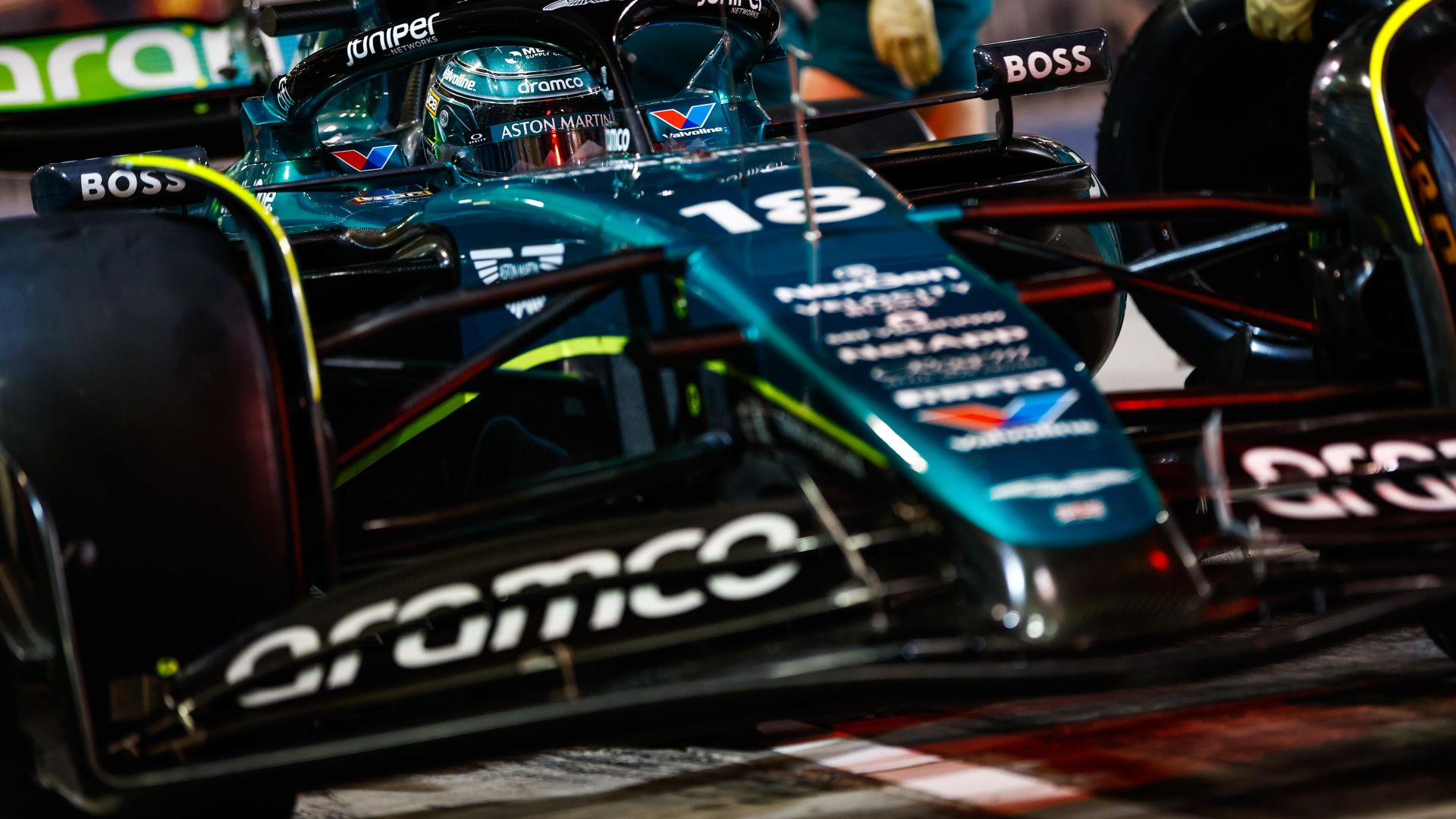F1 Cars vs NASCAR Cars – What’s The Difference?


When comparing F1 cars vs NASCAR cars, it’s clear that each motorsport is distinct not just in culture and following but also in the technical aspects of their respective race cars. F1 cars are known for their open-wheel design, advanced aerodynamics, and lightweight build, designed to maximise speed and agility, particularly on complex road courses featuring sharp turns and mixed elevations. In contrast, NASCAR vehicles are based on stock car models, having a closed-wheel design that is heavier and built to endure the rigours of close-quarter oval racing.
The differences between F1 and NASCAR are not limited to the vehicles’ exteriors. While F1 tends toward technological innovation with a focus on hybrid engines and energy recovery systems, NASCAR remains with traditionally aspirated V8 engines, reflecting a different philosophy in both power and performance. NASCAR emphasises durability and consistency over long distances, primarily on oval tracks, which contrasts sharply with the F1 emphasis on maximum performance, fuel strategy, and tyre management over varied circuit layouts.
These distinctions also extend to race formats, with NASCAR events typically covering longer distances and the series running more races per year, as opposed to the global itinerary F1 follows, which spans numerous countries and continents. The skill sets required for drivers in each series are tailored to their respective vehicles and racing conditions, contributing to a broader conversation about the unique challenges each discipline presents.
Key Specifications and Design Differences
In the world of motorsport, Formula 1 and NASCAR represent two highly technical and performance-driven racing disciplines, with distinctive specifications and designs that define their respective racing experiences.
Chassis and Body Design
Formula 1: Cars feature a single-seater chassis with an open-wheel configuration that is engineered for agility and speed. The chassis is made from ultra-lightweight materials such as carbon fibre, allowing for a minimal weight design.
NASCAR: Teams race with stock cars that have a closed-wheel design and a chassis resembling production models. These heavier cars are built to endure the rigours of oval racing and the frequent contact that occurs between vehicles during races.
Engine and Power Unit
Formula 1: Consists of a complex power unit that houses a turbocharged 1.6-litre V6 engine, combined with hybrid technology known as the Energy Recovery System (ERS), which can exceed 15,000 rpm and delivers high power output with a focus on efficiency.
NASCAR: Traditionally utilises a naturally aspirated 5.8-litre V8 engine capable of reaching upwards of 9,000 rpm. Although lacking the hybrid technology found in F1, the power of a NASCAR engine is delivered with raw simplicity and robust performance that aligns with the demands of oval track racing.
Aerodynamics and Downforce
Formula 1: Cars possess highly engineered aerodynamic designs aimed at maximising downforce, which enhances grip and control at high speeds through corners. The intricate front and rear wings, along with the underbody design, all contribute to this aspect.
NASCAR: While also utilising aerodynamics, the focus in NASCAR is less pronounced compared to F1. Stock cars still benefit from aerodynamic elements like spoilers that aid in maintaining stability, particularly when negotiating the high-speed banked turns of an oval track.
Racing Formats and Rules
The distinction between Formula 1 and NASCAR can be observed in their diverse race formats and rule structures, each tailored to their unique style of racing.
Race Structure and Season
Formula 1 (F1) organises its races into a season consisting of various Grand Prix events held on different tracks around the world, including road courses and street circuits. Each race encompasses a series of laps, with the total number defining the race distance. Races feature a complex qualifying system that determines the starting grid and unfold over a weekend. The championship is determined by points accumulated over the season.
In contrast, the NASCAR season includes a broader array of oval tracks, with a few road courses. NASCAR races, known as races, see drivers navigate many left turns, often at fast speeds on the ovals. They have a unique playoff system leading up to the final championship race, which decides the season’s champion. Race winners and points determine who enters the playoffs.
Pit Stops and Refuelling
Pit stops in Formula 1 are well known for their speed and efficiency, with teams changing tyres in under two seconds. Refuelling during the race, however, is not allowed. Teams must carefully plan their strategy, as each car must start with enough fuel to finish the race.
NASCAR pit stops are slightly different; they are generally longer, with refuelling allowed. Teams often change tyres and refuel simultaneously, making pit stop strategy a vital component of the race outcome. The duration and timing of these stops can significantly affect a team’s race strategy.
Performance and Racing Dynamics
Formula 1 and NASCAR vehicles exhibit distinct performance characteristics and racing dynamics, primarily influenced by their design and the types of races they participate in.
Speed and Acceleration
Formula 1 cars are designed for high speed and rapid acceleration. They can reach top speeds of over 300 km/h, which is facilitated by their lightweight design and powerful V6 turbocharged engines. F1 cars excel in acceleration, capable of going from 0 to 100 km/h in roughly 2.6 seconds. This impressive acceleration is essential for competing on circuit tracks that involve a series of turns and straightaways.
NASCAR vehicles, conversely, are based on stock cars and generally have a lower top speed when compared to F1 cars, often maxing out around 320 km/h. Nonetheless, they reach these speeds with a 5.9-litre V8 engine. NASCAR cars compete on oval tracks where the consistent speeds are more critical than the stop-start acceleration seen in Formula 1 racing.
Handling and Grip
The handling and grip of a Formula 1 car are optimised for navigating complex circuits with various types of corners. They are equipped with sophisticated aerodynamics that produce significant downforce, allowing them to maintain high speeds in corners without losing grip. The combination of downforce and high-tech tyre compounds provides the cars with exceptional cornering capabilities, handling lateral forces that can exceed 5G.
In contrast, NASCAR cars are heavier and have a different aerodynamic setup, tailored for endurance and stability on high-speed oval tracks where cornering involves less sharp turns. Their handling is designed to withstand the rigours of close-quarters racing at sustained high speeds. They rely more on mechanical grip and the balance between downforce and drag, which suits their predominantly left-turn circuits.
By understanding these performance characteristics, one can appreciate the unique challenges drivers face in each racing discipline, where both speed and control play vital roles in achieving success on the track.
Technological Aspects and Team Strategies
In the high-stakes world of motor racing, Formula 1 and NASCAR showcase distinct approaches to technology and team strategy, both critical in achieving victory on the track.
Engineering and Technical Teams
Both Formula 1 and NASCAR teams employ a large crew of engineers and technical specialists who work tirelessly on vehicle development, setup, and race-day preparation. In Formula 1, the engineering team is responsible for optimising the power unit, which includes the Internal Combustion Engine (ICE) and the Energy Recovery System (ERS). The ERS is a unique component that recovers energy from the car’s braking and exhaust systems, providing additional horsepower to the engine. NASCAR teams, while focusing less on hybrid technology, maximise the performance of their 358 cubic-inch V8 engines to deliver raw power.
The design of aerodynamic elements like wings and bodywork is pivotal in F1 due to the need for high downforce and low drag. These elements are meticulously tuned to ensure the car is glued to the track through corners while also achieving high speeds on straights. NASCAR vehicles, by contrast, are heavier stock cars with a focus on stability and durability to withstand the rigours of oval-track racing.
Data Analysis and Telemetry
Telemetry is the lifeblood of data analysis in racing, providing real-time metrics from the car to the engineers who monitor every aspect of performance. In F1, teams employ banks of laptops at the pit wall, scrutinising data that governs everything from tyre wear to fuel consumption. These insights inform strategy and can be the difference between victory and defeat.
NASCAR engineers also utilise telemetry, but with a different focus due to their unique racing format. The data collected helps to fine-tune racing strategies such as pit stop timing and adjusting to track conditions during the race. NASCAR teams must also manage the horsepower under their hood with a strategic eye on endurance, as races are generally longer than those in F1.
Extensive telemetry and data analysis enable teams to make informed decisions and tailor their approach to each driver’s style and the demands of the track, emphasising the critical role of technology in the pursuit of racing excellence.
Cultural and Economic Impact
The cultural and economic landscapes of Formula 1 and NASCAR are defined by distinct approaches to brand affiliations, sponsorships, and the composition of their respective fan bases. These factors significantly influence the financial health and global recognition of the teams and drivers within each motorsport.
Brand Affiliation and Sponsorship
Formula 1 thrives on international exposure, attracting global companies vying for the most favourable sponsorships and branding opportunities. Teams often receive backing from leaders in various industries, conferring upon them significant financial support for research, development, and operational costs. A single F1 car can be a moving billboard for technology brands, luxury manufacturers, and financial institutions, illustrating a symbiotic relationship that transcends national borders.
Similarly, NASCAR relies on brand affiliations, but with a concentration on American enterprises and a stronger emphasis on consumer goods. This results in a more regional approach to marketing, with local fans recognising domestic brands on their favourite cars and drivers. Teams negotiate lucrative deals that not only fund the car’s operations but also influence the broader economy through merchandise sales and advertising.
Fan Base and Popularity
The fan base and popularity of Formula 1 and NASCAR manifest differently on a cultural level. Formula 1 appeals to an international audience, with races conducted across the globe; this accounts for its expansive viewership and social media followers. F1’s popularity contributes directly to its economic impact, as high viewership correlates with substantial broadcasting rights and ticket sales at prestigious tracks worldwide.
Conversely, NASCAR boasts a dedicated and substantial American fan base, which has a unique connection with the sport, often through generational family traditions. NASCAR events are heavily concentrated in the United States, and while this may limit international reach compared to F1, it allows for more concentrated marketing efforts and sponsorship strategies that resonate deeply with American motorsport enthusiasts. NASCAR’s popularity drives significant revenue from race-day attendance and consistent television ratings nationally.





